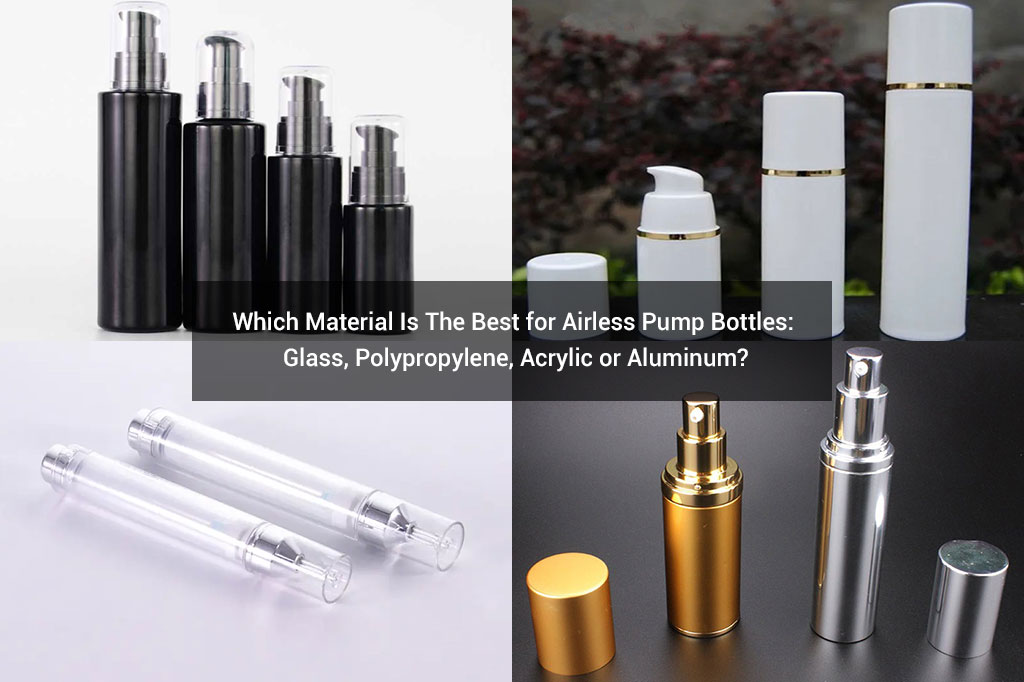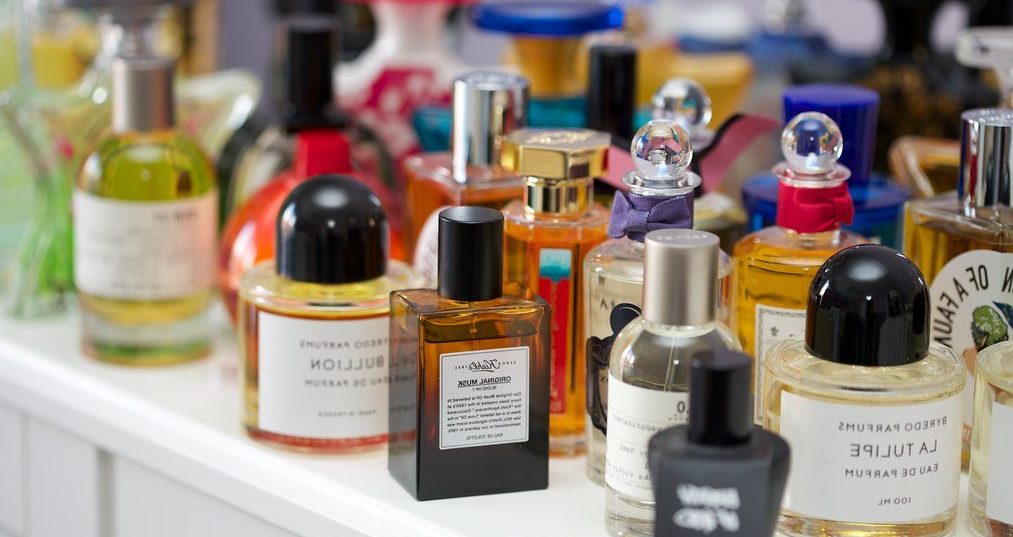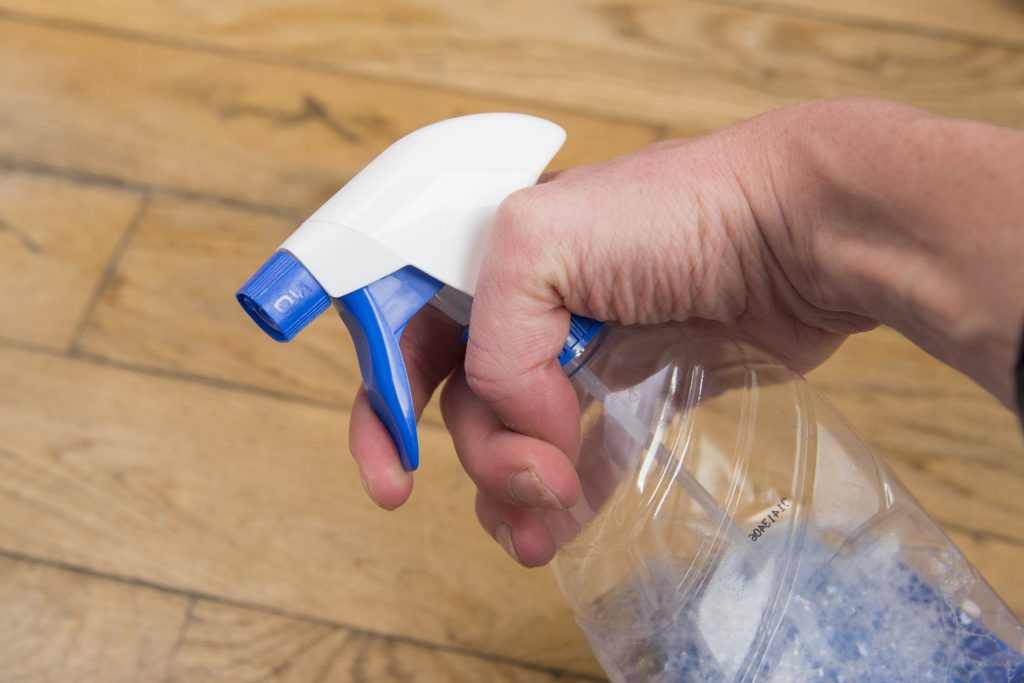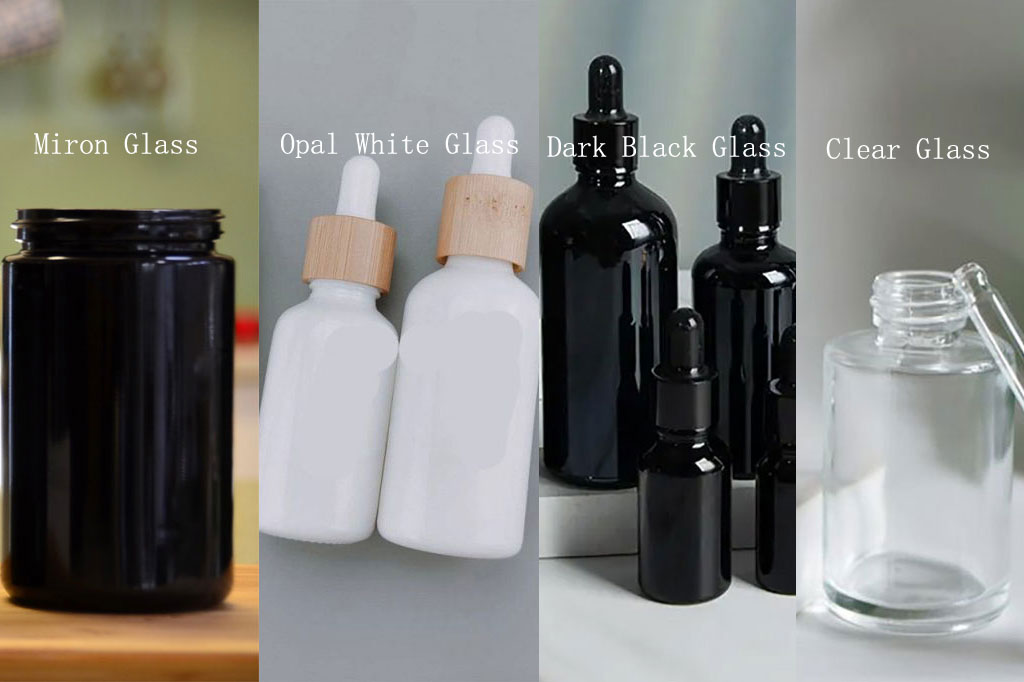Airless pump bottles have become an essential packaging choice in the cosmetics and skincare industries due to their ability to protect the integrity of products, maintain hygiene, and extend shelf life.
Choosing the right material for these bottles is critical, as it affects both the functionality and aesthetic appeal of the product.
The materials most commonly used for airless pump bottles include glass, polypropylene (PP), acrylic, and aluminum.
1. Glass Airless Pump Bottles
Glass airless pump bottles offer a luxurious and premium feel, ideal for high-end skincare and cosmetic products. They provide excellent protection for sensitive formulations and maintain the product’s integrity with their non-reactive nature, though they are heavier and more fragile than other materials.
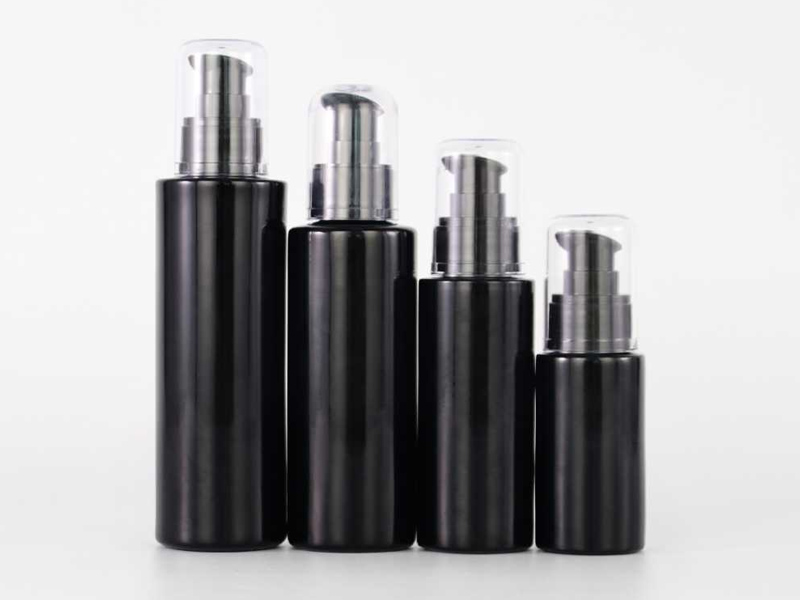
Pros:
- Premium Look and Feel: Glass exudes a luxury appeal, making it ideal for high-end skincare and cosmetic products.
- Non-Reactive: Glass is inert, meaning it doesn’t react with the product inside, keeping the formula intact.
- Environmental Friendliness: Glass is fully recyclable and can be reused indefinitely without any loss of quality, making it a more sustainable option than plastic.
Cons:
- Fragility: Glass is prone to breaking or shattering, especially during shipping or accidental drops.
- Weight: Glass bottles are heavier than other materials, which could increase shipping costs and may not be as convenient for travel.
- Cost: Glass packaging tends to be more expensive due to the manufacturing process, which could raise the price of the product.
Best For:
High-end beauty products and serums where aesthetics, product integrity, and luxury feel are essential.
2. Polypropylene (PP) Airless Pump Bottles
Polypropylene airless pump bottles are lightweight, they’re perfect for budget-friendly cosmetic lines. They offer excellent protection for the product while being resistant to impact and most chemicals, though they lack the premium look of glass.
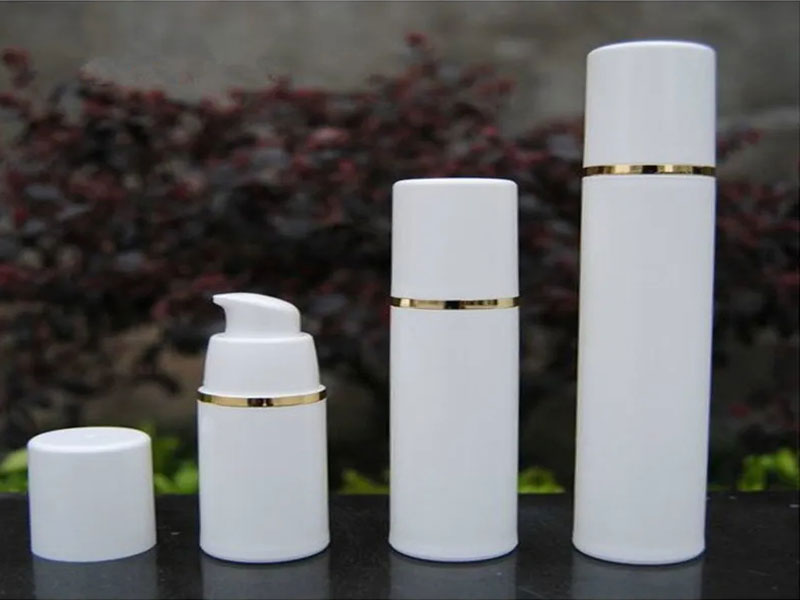
Pros:
- Lightweight: PP is a lightweight material, making it cost-effective for both manufacturing and shipping.
- Durable: Polypropylene is resistant to impact, making it a sturdy option that won’t break easily like glass.
- Cost-Effective: As one of the least expensive plastics, PP makes for an economical choice in bulk production.
- Chemical Resistance: PP is resistant to many chemicals and won’t react with most product formulations, preserving the integrity of the product.
Cons:
- Less Aesthetic Appeal: While functional, polypropylene does not offer the premium look of glass or acrylic, which could affect the perception of higher-end products.
- Limited Customization: PP doesn’t lend itself as easily to intricate designs or color customization compared to materials like acrylic.
Best For
Budget-friendly cosmetic lines or everyday skincare products where durability and practicality are key.
3. Acrylic Airless Pump Bottles
Acrylic airless pump bottles combine durability with sleek design, offering the clarity of glass and the strength to avoid breakage. Lightweight and customizable, they provide a stylish option for mid-range products, though they may be prone to scratching over time.
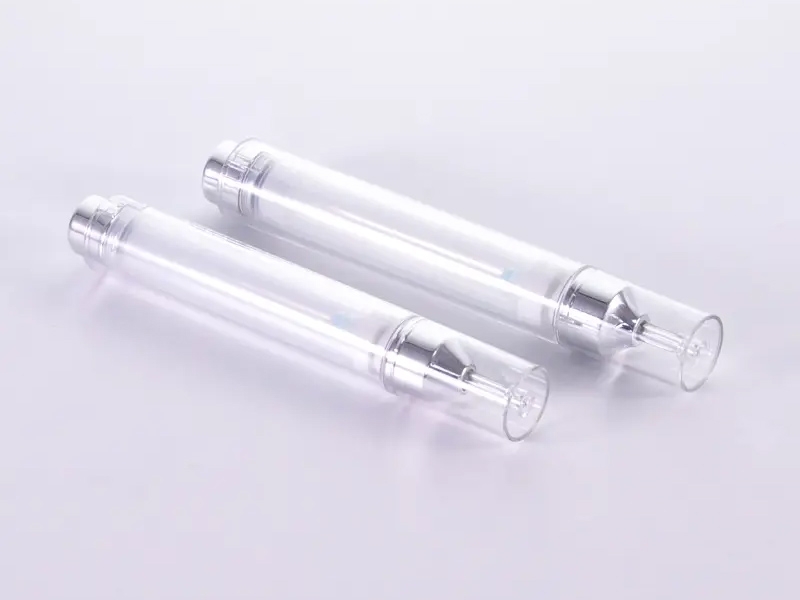
Pros:
- Aesthetic Appeal: Acrylic combines the clarity of glass with high customization options for shape, color, and design. It can be made to look sleek and modern, offering a premium feel without the fragility of glass.
- Durable: Acrylic is tough and resistant to shattering, making it more suitable for active or travel-friendly products.
- Lightweight: While it’s sturdier than glass, acrylic is still lightweight, which can reduce shipping costs.
Cons:
- Potential for Scratching: Acrylic can scratch more easily than other materials, which can affect the overall look and presentation of the product over time.
- Chemical Sensitivity: While resistant to many substances, certain chemicals (such as essential oils or alcohol-based products) can degrade acrylic material over time.
Best For:
Mid-range to premium products where durability, clarity, and customizable design are important.
4. Aluminum Airless Pump Bottles
Aluminum airless pump bottles offer a modern, metallic finish that is both durable and eco-friendly. With excellent protection against air and light, they preserve product integrity while giving a premium look. They are lightweight and recyclable but may dent with rough handling.
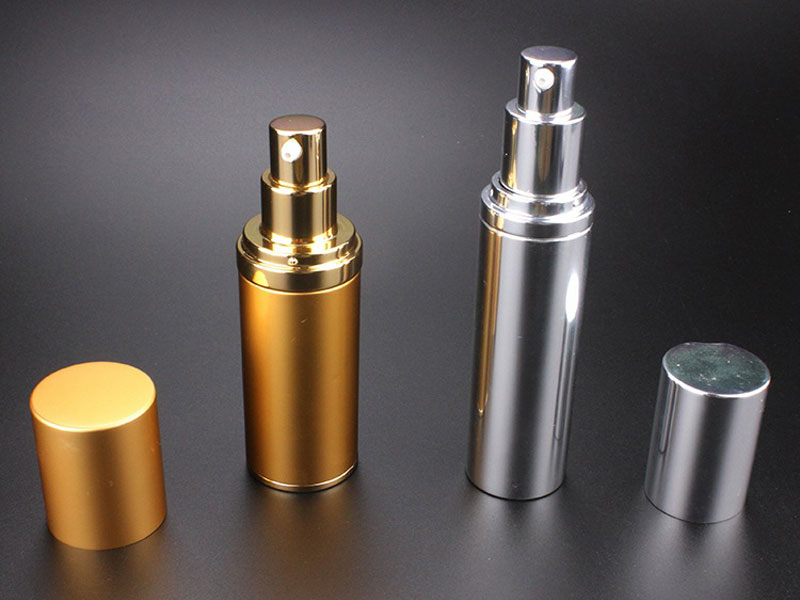
Pros:
- Durability and Protection: Aluminum provides an excellent barrier against light, air, and moisture, which can protect the integrity of the product inside.
- Sustainability: Aluminum is highly recyclable, and its lightweight nature can make it an environmentally friendly choice for packaging.
- Premium Appearance: Aluminum provides a sleek, metallic finish that offers a modern and high-end appearance to the packaging.
Cons:
- Susceptible to Dents: While aluminum is durable, it is prone to denting, especially if subjected to rough handling or pressure.
- Limited Design Flexibility: Unlike acrylic, aluminum may have fewer design options, especially when it comes to intricate shapes or transparent features.
- Price: Aluminum tends to be more expensive than plastic options, and the manufacturing process can also add to the cost.
Best For:
Sustainable, high-end products where a sleek, modern aesthetic is desired, but where the integrity of the formula must be maintained.
Conclusion: Which Material is Best?
Choosing the best material for airless pump bottles depends on the product type, target market, and priorities for packaging. Here’s a quick summary of the best choices for different needs:
- For Luxury Products: Glass is the top choice due to its premium feel and chemical inertness.
- For Budget-Friendly, Durable Options: Polypropylene offers excellent practicality at a lower cost.
- For Aesthetic Appeal with Durability: Acrylic is the best of both worlds, offering clarity and customization while still being sturdy.
- For Sustainability and Protection: Aluminum is a fantastic option, particularly for eco-conscious brands seeking a sleek design with strong product protection.
Ultimately, the best material depends on balancing the product’s requirements, the desired look, and cost considerations. For businesses prioritizing eco-friendliness, aluminum and glass stand out. For more budget-conscious or durable options, polypropylene and acrylic are excellent choices.

